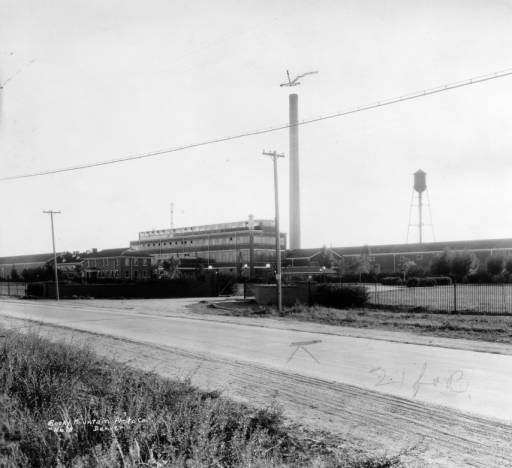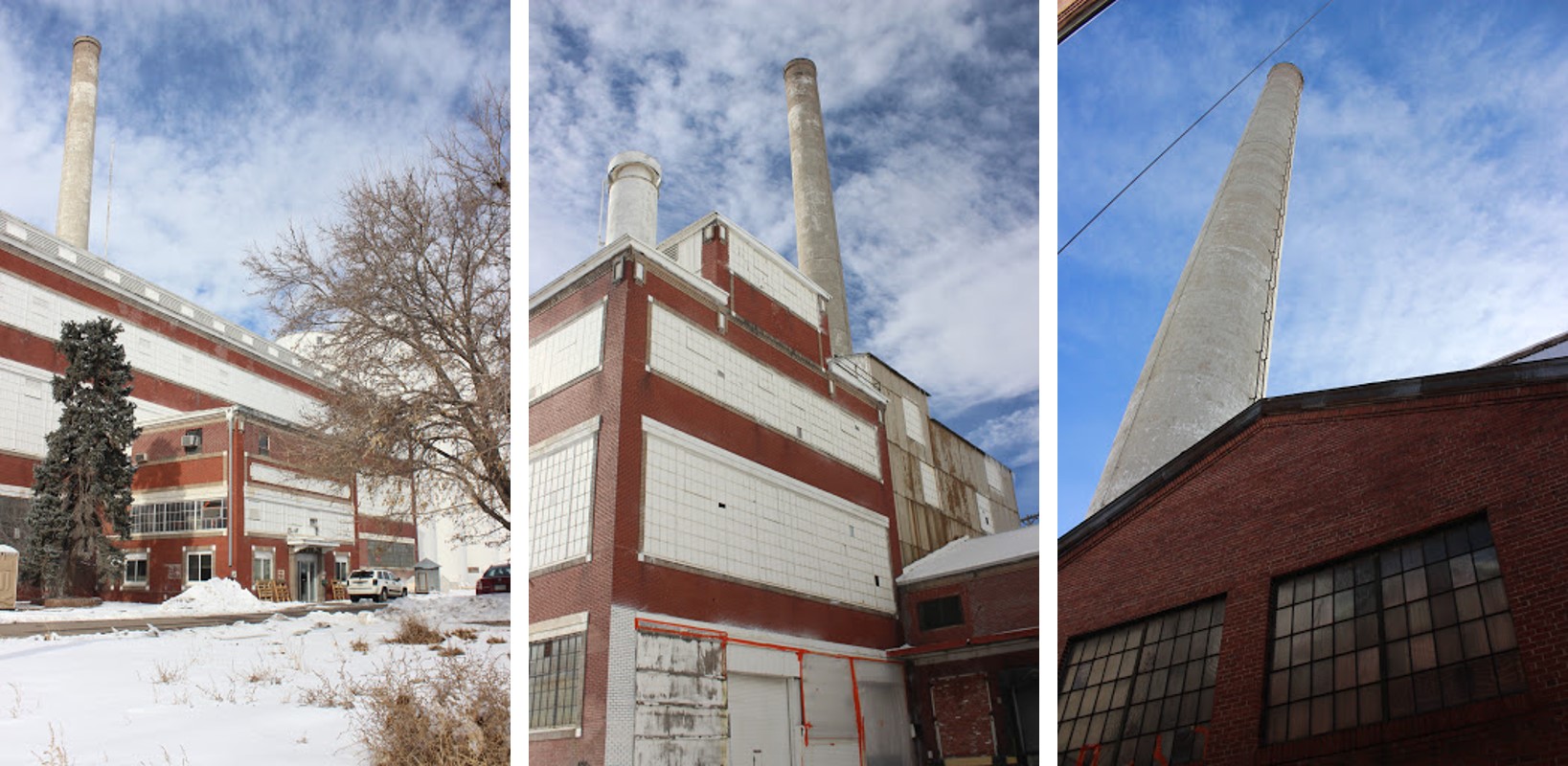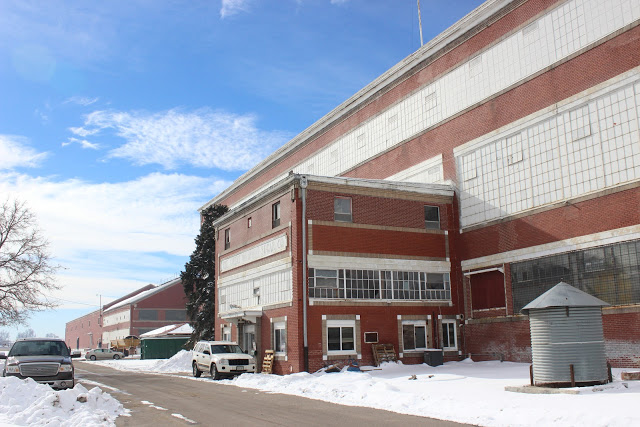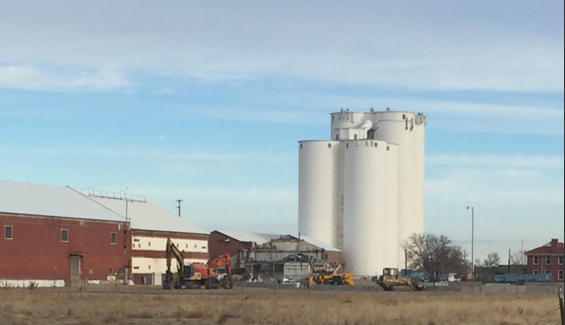Year Listed: 2016
County: Adams County
Construction Date: 1917
Threat When Listed: Demolition
Status: LOST
Site Update: Unfortunately, the Great Western Sugar Factory smokestack was demolished on February 12, 2017. Click here for more information.
Quote from Robin Kring on the demolition below.
“It is sad that the factory building complex, including the smokestack have had to be demolished. But, it is great to know that the remaining historical structures will be saved due the use of the site as an Amalgamated Sugar Company storage and terminal site (operating since 1985). Plus, it is a great “SAVE” that the factory/mill complex was thoroughly documented with photos, oral histories, and documentation of beet-sugar processes before demolition. EVERYONE wanted to save the factory complex, but it wasn’t safe due to environmental hazards and extensive dilapidation from former GWS abandonment. The CMEP team explored several ideas with the owners and potential developers for rehabilitation, but in the end keeping the site and community safe was the primary goal. A lot of people cared, still care, and continue to work hard to make sure one of Brighton’s and Colorado’s most treasured places can be experienced for today’s and tomorrow’s generations.”
-Robin Kring
Video courtesy of CBS4
Early prospectors came to the mountains of Colorado seeking riches of gold and silver, while many early 20th-century pioneers found agricultural prosperity through “White Gold” also known as the sugar beet.
Sugar beets were cultivated in Colorado as early as 1869. Farmers quickly identified many aspects of Colorado’s plains that were conducive to growing beets such as the high number of sunny, frost-free days that were well fitted with the growing cycle of the sugar beet. Sugar beet factories (known interchangeably as beet sugar factories) were vital to Colorado’s agricultural-based economic development and provided an essential way of life to communities throughout the state. Few of these sugar beet complexes remain. Those still standing do so in a variety of capacities—some intact, some partially adapted to a new use. The Great Western Sugar Company (GWS) operated as many as 13 beet sugar processing factories in Colorado. Today only six remain.
In the early 20th century Brighton approached GWS to build a factory complex outside of town. GWS agreed if the community would commit 5,000 acres for growing sugar beets. The community agreed and construction of GWS’s tenth Colorado factory began in 1916. One year later the facility opened as GWS’s showcase operation, a result of its proximity to Denver investors. The factory incorporated state-of-the-art equipment, a modern administration building, and a contextual landscape designed with visitors and dignitaries in mind. President Dwight D. Eisenhower, toured the facility in September of 1954.
Amalgamated Sugar Company and its parent company, Snake River Sugar Company, retain strong ties to the Brighton community through the area’s sugar beet heritage.
The Great Western Sugar Company closed its Brighton plant in 1977 and Amalgamated Sugar Company purchased the complex in 1985. The company uses some of the structures for storage and distribution but many of the key industrial buildings stand vacant and unused. Despite the company’s commitment to the community, the Brighton facility shares many of the challenges facing inactive sugar factory complexes across the country. In 2017, the main factory building was demolished and explosives brought down the smoke stack as much of the iconic structure was lost. Through the Endangered Places listing, however, seven of the remaining ten buildings and structures remain. Finally, the opportunity to thoroughly document the site before demolition through photography, oral histories, and a comprehensive historical repot, including the factory layout and refinery process, was realized.
Additional Links:
Learn more about the Brighton GWS factory and the Sugar Beet Industry in Brighton’s “Sugar Sweet” Times – Memories of our Sugar Beet Days and Great Western Sugar Company. Copies are available online for $5.00 each at Welcome to the Bookstore.

“These stories of our sugar beet days represent a small-town community spirit that still lives on today and gives both original and new residents a sense of belonging,” says Kring. “Many of those living here have fond stories of working at the Great Western Sugar (GWS) Company factory (or know someone who did) at one time or another. Sugar beet growers and their families warmheartedly recall with pride their roots in Brighton’s history. All fondly talk of the GWS factory like a personal friend and share a spirit of recognition to the sugar sweet times that established Brighton as an agricultural hub responsible for the community’s economic opportunities.”
The 40-page publication contains memories and photos of Brighton’s sugar beet days, a saving treasured-places overview, fun sugar-beet facts, and several “sugar-sweet” recipes made with GW sugar.
– Find out more about Brighton’s Historic Preservation Commission here
– Click here for the latest information on Brighton Arts & Culture









